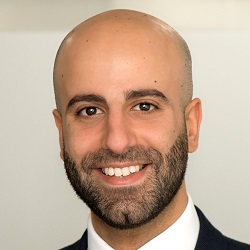Guest post by John McElroy and Jonathan Amior, London Solicitors Litigation Association members, and head of commercial disputes and senior associate respectively at Hausfeld
The shorter trial scheme (STS) and flexible trial scheme (FTS) became permanent under PD 57AB in the Business and Property Courts on 1 October 2018, superseding the pilot practice direction formerly contained in PD51N.
Since then, take-up has been limited despite the schemes’ practical advantages. Users of either the STS or the FTS can expect reduced costs, shorter trials, earlier trial dates and quicker judgments. Cases within the STS are also allocated a designated judge, enabling a consistency of approach from the bench throughout the litigation.
The schemes’ benefits to clients are clear, so why are more litigants not using them?
Rather than trying to prove this negative, this article summarises some of the potential barriers to the adoption of the STS and FTS and suggests changes that could be considered in order to increase the popularity of the Schemes.
STS trial duration
Paragraph 2.3 of PD 57AB imposes a strict four-day limit on the length of trials in the STS, including reading time. In the case of an application to transfer a case into the STS at the time of the first case management conference, the respondents and the court may be cautious about forcing a case into a trial within that timeframe, which will practically allow three or three and a half days of hearing time.
Although PD 57AB expressly includes reading time, as did the pilot in PD 51N, more recent guidance released to address the tendency of parties to underestimate reading time has resulted in trial listings being fixed on a reading time inclusive basis generally.
This has been reflected in the 2022 editions of both the Commercial Court and Chancery Guides. If the four-day time limit is prohibitive, this could be ameliorated by increasing the time limit to five days, including reading time; or including a rebuttable presumption that trials of four days including reading time will be assigned to the STS automatically.
Court’s powers to transfer
Paragraph 2.13 of PD 57AB states that the court may, of its own initiative, “suggest” that a case be transferred into the STS.
Judges might be better equipped to deal with contested applications decisively if the wording was amended to allow the court to simply transfer cases rather than suggest a transfer. Early on during the pilot, Mr Justice Birss (as he then was) confirmed the court’s power to transfer existing cases into the STS. (See Family Mosaic Home Ownership Ltd v Peer Real Estate Ltd [2016] EWHC 257 (Ch). Note that in this instance the parties consented to the application to transfer the case into the STS.)
Perhaps judges would be emboldened if paragraph 2.13 had more teeth.
Streamlined procedure
Parties considering the use of the schemes should raise this with their counterparties during the pre-action phase of the litigation. Unless the parties are agreed at the outset, there may be additional costs incurred by transferring a case into the schemes at a later stage.
Parties may, however, be reluctant to commit to the abridged process at such an early stage given that, for example, the STS procedure in paragraphs 2.39 to 2.43 of PD 57AB leads to more limited disclosure.
Any claim in which full model D disclosure may be necessary is, therefore, unlikely to fit into the STS.
Although specific disclosure applications are discouraged under the STS (paragraph 2.43), parties can take some comfort from the fact that the process still allows an opportunity to request disclosure of particular documents or classes of documents, which will fall to be considered at the case management conference if not agreed (paragraph 2.40).
Tactical considerations
Where the applicability of the schemes is contested, by the time the parties’ positions have crystalised a range of other disagreements may have arisen, leading to tactical rather than practical reasons feeding into any disagreement.
Claimants looking to transfer cases into, or retain cases in, the schemes might be suspected of trying to accelerate a claim under STS timeframes to increase pressure on their opponents despite the case not being a suitable fit for them.
Defendants, on the other hand, aiming to transfer cases out of (or avoid transferring them into) the schemes might equally be suspected of seeking to obstruct a quicker outcome which may weaken their negotiating positions or be contrary to their wider commercial objectives.
To cut through these differences, the court may need to take a more interventionist approach where parties do not consent.
Lack of familiarity
In practice, the STS is predominantly used for intellectual property (IP) claims, perhaps due to users’ familiarity with a similar type of framework from the Intellectual Property Enterprise Court.
As part of the Civil Justice Council costs consultation, IP users saw the STS as a useful middle ground, for example, in liability trials in more modest claims.
This is topical given the proposal for a pilot within the STS with capped costs to compete with the Unified Patent Court in Paris being set up in the EU, based on a similar idea with capped costs and damages.
Further efforts could be made to promote the STS and FTS and their potential benefits in general court user groups outside the IP sphere.
The opportunities to reduce costs and streamline proceedings using the STS and FTS are undeniable. The schemes should be particularly attractive at a time when many litigants will be seeking to protect their interests as a result of the current period of economic difficulty.
If the suggestions in this article can help shift perceptions of the STS and FTS from an afterthought to the starting point for appropriate cases, then the benefits for all stakeholders will be plain to see.













Leave a Comment